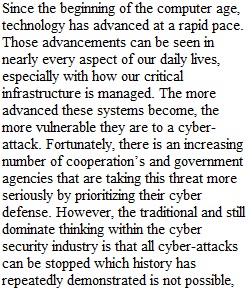


Q The Conclusion brings your argument to a close. Do not use this space to summarize the entire paper; the Abstract is a better place for a concise summary. Instead, use the Conclusion as a reflective space. In the Body, you've made very specific claims and offered tightly coordinated examples. In the Conclusion, broaden your scope to view the topic in the context of the wider world. Connect the importance of your argument to its field or to society. • What impact do you envision your ideas having on medicine, politics, criminal justice, or the economy? • How would your ideas affect people if properly executed? • What would happen if your ideas are not enacted? • What are the advantages and disadvantages of the current practice? • What should we be doing to fix this? Answering questions like these can help prove your argument's relevance and leave your reader with something to think about. Resources: • How to Write a Conclusion (with the 5Cs Conclusion Method) (Links to an external site.) - This video gives you some specific and practical tips for ideas to include in your conclusion. This is an especially good resource if you're running out of ideas and feel that you don't have anything more to say. Use any or all of these strategies in your Conclusion. The following 2 samples offer formal examples of research paper conclusions. Your conclusion may borrow from some of the reflective ideas in the above video as well as some of the content suggestions from the examples below. • Sample Conclusion 1 Download Sample Conclusion 1- This Sample Conclusion from the American Psychological Association demonstrates positioning the topic in the wider field, acknowledging limitations of the study/field, identifying advantages/disadvantages of the current system, and a final recommendation. • Sample Conclusion 2 Download Sample Conclusion 2- This Sample Conclusion, also from APA, demonstrates how the Conclusion can be further broken into subsections. In this version, the author has identified limitations on current studies and made recommendations for future studies. Instructions: Review the video and 2 Sample Conclusions above. Write your own Conclusion, making sure that you are not simply summarizing all the points made previously in the paper. Submit when complete. Rubric Conclusion Draft Rubric Conclusion Draft Rubric Criteria Ratings Pts This criterion is linked to a Learning OutcomeConclusion draft meets length requirements 25 to >22.5 pts COMPLETE Conclusion is at least 1-2 pages long 22.5 to >12.5 pts PARTIALLY COMPLETE Conclusion draft is almost a page long. 12.5 to >0 pts NOT COMPLETE Conclusion draft is not complete 25 pts This criterion is linked to a Learning OutcomeConclusion draft fulfills content requirements 25 to >22.5 pts COMPLETE Attempts to fulfill all content requirements. 22.5 to >12.5 pts PARTIALLY COMPLETE Attempts to fulfill some content requirements. 12.5 to >0 pts NOT COMPLETE Little or none of the content requirements are attempted. 25 pts This criterion is linked to a Learning OutcomeConclusion draft meets formatting requirements 25 to >22.5 pts COMPLETE Attempts to meet APA paper formatting and citation guidelines with some minor issues. 22.5 to >12.5 pts PARTIALLY COMPLETE Attempts to use APA paper formatting and citation guidelines for parts of the conclusion. 12.5 to >0 pts NOT COMPLETE Little or no attempt to use APA formatting and citation guidelines. 25 pts This criterion is linked to a Learning OutcomeConclusion draft is mostly clear and readable 25 to >22.5 pts COMPLETE Attempts to follow rules for MUGs and follow a clear organizational pattern. May contain minor errors that can be edited in later drafts. 22.5 to >12.5 pts PARTIALLY COMPLETE Attempts to follow rules for MUGs and follow a clear organizational pattern. Some sentences were unclear and/or it was hard to tell how some ideas were related to one another. 12.5 to >0 pts NOT COMPLETE There were too many MUGs errors for the introduction to be clear. 25 pts Total Points: 100 PreviousNext
View Related Questions